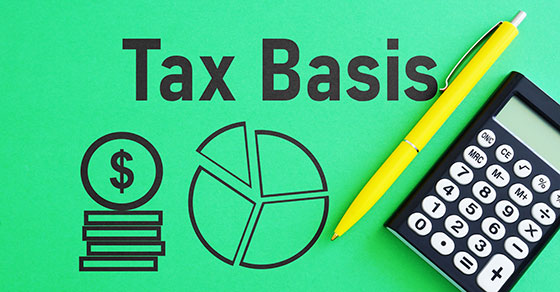Businesses, be prepared to champion the advantages of an HSA
- ByPolk & Associates
- May, 03, 2023
- All News & Information
- Comments Off on Businesses, be prepared to champion the advantages of an HSA
Many companies have lowered benefits costs by offering a high-deductible health plan (HDHP) paired with a Health Savings Account (HSA). Some employees, however, might react negatively to a plan that starts with the phrase “high-deductible.” So, if you decide to offer an HSA, be prepared to communicate the advantages. An HSA is a tax-advantaged savings account funded with pretax dollars. This lowers participants’ taxable income. Also, account funds grow tax-free, and withdrawals aren’t taxable as long as they’re used for eligible expenses. HSAs have retirement and estate planning features, too. Plus, HDHPs tend to have lower premiums than other plan types. Contact us for more information.
The IRS clarifies what counts as qualified medical expenses
- ByPolk & Associates
- May, 03, 2023
- All News & Information
- Comments Off on The IRS clarifies what counts as qualified medical expenses
If you itemize deductions on your tax return, you may wonder: What medical expenses can I include? The IRS recently issued some frequently asked questions addressing when certain costs are qualified medical expenses for federal income tax purposes. For example, the costs of over-the-counter (non-prescription) drugs generally don’t count as qualified medical expenses. However, the cost of insulin is eligible. The cost of a weight-loss program is a qualified medical expense only if it treats a specific disease diagnosed by a physician such as obesity, diabetes, hypertension or heart disease.
Education benefits help attract, retain and motivate your employees
- ByPolk & Associates
- May, 03, 2023
- All News & Information
- Comments Off on Education benefits help attract, retain and motivate your employees
One popular fringe benefit is an education assistance program that allows employees to continue learning and perhaps earn a degree with financial assistance from their employers. An employee can receive, on a tax-free basis, up to $5,250 each year from his or her employer under a “qualified educational assistance program.” For this purpose, education means instruction or training that improves or develops an individual’s capabilities. Different rules apply if the education is job-related. In addition to education assistance, some employers offer student loan repayment assistance. Contact us to learn more about setting up an education assistance or student loan repayment plan.
There’s a favorable “stepped-up basis” if you inherit property
- ByPolk & Associates
- Apr, 19, 2023
- All News & Information
- Comments Off on There’s a favorable “stepped-up basis” if you inherit property
Have you inherited assets or are you planning your estate? You may not understand how tax “basis” works. Under the tax code “step-up” rules, an heir receives a basis in inherited property equal to its date-of-death value. For example, if your grandfather paid $500 for shares of an oil stock in 1940 and it’s worth $5 million at his death, the basis is stepped up to $5 million for your grandfather’s heirs. That means all that gain escapes federal income tax! If your grandfather instead made a gift of the stock during his life (rather than passing it on at death), the “step-up” in basis (from $500 to $5 million) would be lost. Contact us for tax guidance with estate planning or inheritances.
Take advantage of the rehabilitation tax credit when altering or adding to business space
- ByPolk & Associates
- Apr, 19, 2023
- All News & Information
- Comments Off on Take advantage of the rehabilitation tax credit when altering or adding to business space
If your business occupies a large structure and you need to increase space or move, keep the rehabilitation tax credit in mind. The credit is equal to 20% of the qualified rehabilitation expenditures (QREs) for a qualified building that’s also a certified historic structure and meets other requirements. A QRE is any amount chargeable to capital and incurred in connection with the rehab (including reconstruction) of a qualified building. QREs can’t include building enlargement or acquisition costs. The 20% credit is allocated ratably to each year in the five-year period beginning in the year in which the qualified building is placed in service. Contact us to discuss this and other tax breaks.
5 valuation terms that every business owner should know
- ByPolk & Associates
- Apr, 19, 2023
- All News & Information
- Comments Off on 5 valuation terms that every business owner should know
Getting a company professionally appraised is essential in the event of a business sale, merger or acquisition. It’s also important when creating or updating a buy-sell agreement or doing estate planning. Here are five key valuation terms: 1) Fair market value; a relatively common term with a surprisingly long definition. 2) Fair value; a term often confused with fair market value but not the same thing. 3) Going concern value; the estimated worth of a company expected to remain operational. 4) Valuation premium; an increase in a company’s value due to certain factors. 5) Valuation discount; a decrease in a business’s value because of specified circumstances. Contact us for more info.
Paperwork you can toss after filing your tax return
- ByPolk & Associates
- Apr, 19, 2023
- All News & Information
- Comments Off on Paperwork you can toss after filing your tax return
Once you file your 2022 tax return, you may wonder what tax papers you can throw away. You may have to produce records if the IRS audits your return. It’s a good idea to keep the actual returns indefinitely. But what about supporting records such as receipts and canceled checks? In general, except in cases of fraud or substantial understatement of income, the IRS can only assess tax within three years after the return for the year was filed (or three years after the return was due). For example, if you filed your 2019 return by April 15, 2020, the IRS has until April 15, 2023, to assess a tax deficiency against you. If you file late, the IRS generally has three years from the date you filed.
Retirement saving options for your small business: Keep it simple
- ByPolk & Associates
- Apr, 19, 2023
- All News & Information
- Comments Off on Retirement saving options for your small business: Keep it simple
If you’re thinking about setting up a retirement plan for yourself and your employees, but you’re worried about the financial commitment and administrative burdens involved, there are a couple of options to consider. Take a look at a SEP or a SIMPLE plan. When you set up a SEP for yourself and your employees, you’ll make deductible contributions to each employee’s SEP-IRA. The maximum amount of deductible contributions that you can make to an employee’s SEP-IRA, and that he or she can exclude from income, is the lesser of 25% of compensation and $66,000 for 2023. SIMPLE deferrals are up to $15,500 this year plus an additional $3,500 catch-up contributions for employees ages 50 and older.
ACA penalties will rise in 2024
- ByPolk & Associates
- Apr, 19, 2023
- All News & Information
- Comments Off on ACA penalties will rise in 2024
The IRS recently announced 2024 indexing adjustments to the applicable dollar amount used to calculate employer shared responsibility penalties under the Affordable Care Act (ACA). Applicable large employers (ALEs) must offer minimum essential coverage that’s affordable and provides minimum value to full-time employees and their dependents. An ALE may incur a penalty if at least one full-time employee receives a premium tax credit for buying coverage through a Health Insurance Marketplace. For failures occurring in 2024, the penalties will be $2,970 for not offering coverage and $4,460 for offering coverage that doesn’t meet the affordability and minimum essential coverage requirements.
The tax advantages of hiring your child this summer
- ByPolk & Associates
- Apr, 05, 2023
- All News & Information
- Comments Off on The tax advantages of hiring your child this summer
Summer is around the corner so you may be thinking about hiring young people at your small business. At the same time, you may have a child looking to earn money. Consider putting your child on the payroll. It’s a win-win! You may be able to turn high-taxed income into tax-free or low-taxed income by shifting some business earnings to a child for services performed. In order to deduct the wages as a business expense, the work done must be legitimate and the child’s salary must be reasonable. You also may be able to achieve Social Security tax savings (depending on how your business is organized) and even make retirement plan contributions for your child. Contact us if you have any questions.










